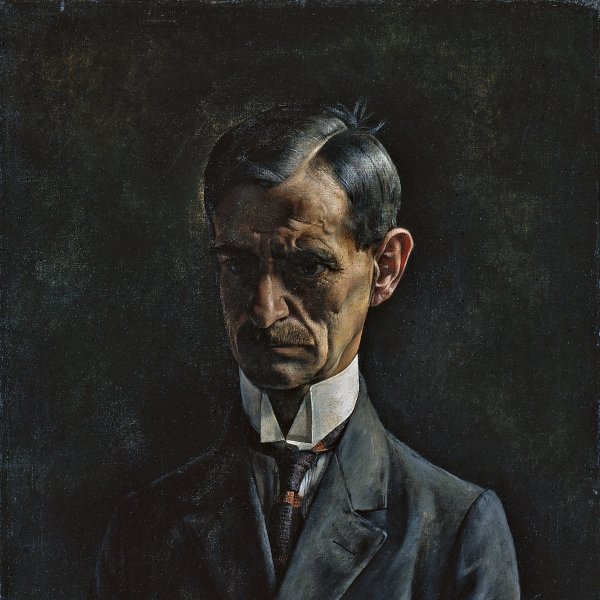Albert Henrich
Düsseldorf, 1899-1971
Albert Henrich pursued his artist’s career within the realist movements that spread across Germany in the 1920s and 1930s and his painting belongs to the so-called Neue Sachlichkeit (New Objectivity). He chiefly embraced landscapes and portraits, genres cultivated by the seventeenth-century Dutch painters, whose interest in technical perfection he also adopted. Henrich was born in Düsseldorf, where he spent most of his life and played an important role on the art scene. He trained at the city’s Kunstakademie under Seller, Manchen, Spatz and Ederer. He was conscripted by the army when the First World War erupted.
Henrich had already made a name for himself by the time he received the Albrecht Dürer prize awarded by the city of Nuremberg in 1931 and his fame became consolidated during the following years in which he exhibited at the Haus der Kunst in Munich and the Grosse Kunstausstellung held in Düsseldorf in 1937, among other venues. He received the Cornelius prize in 1942. His reputation did not suffer with the advent to power of National Socialism in Germany and after the Second World War ended he became an important figure in the city’s cultural reconstruction. In 1949 he founded the Düsseldorfer Künstlergruppe, of which he became the first president. Henrich made many trips towards the end of his life. His favourite destinations were North Africa, Italy, Spain and Greece, and also the south of France, to which he had paid a visit in 1927 that resulted in a series of Mediterranean landscapes.
Henrich had already made a name for himself by the time he received the Albrecht Dürer prize awarded by the city of Nuremberg in 1931 and his fame became consolidated during the following years in which he exhibited at the Haus der Kunst in Munich and the Grosse Kunstausstellung held in Düsseldorf in 1937, among other venues. He received the Cornelius prize in 1942. His reputation did not suffer with the advent to power of National Socialism in Germany and after the Second World War ended he became an important figure in the city’s cultural reconstruction. In 1949 he founded the Düsseldorfer Künstlergruppe, of which he became the first president. Henrich made many trips towards the end of his life. His favourite destinations were North Africa, Italy, Spain and Greece, and also the south of France, to which he had paid a visit in 1927 that resulted in a series of Mediterranean landscapes.





